If you know what is normal for a horse, you will be quicker to recognize when something is wrong. Careful daily observation is the best way of picking up stable changes that may indicate that a horse is off-color. A simple way to remember what to look for is to think of ABC, meaning Appearance, behavior, and condition. Check each of the horse vital signs in turn to monitor a horse’s well-being. Thus, a horse that seems just a bit dull and off his feed may have a sky-high temperature and needs urgent treatment. If your horse feels hot, or cold, or is sweating, one of the first things you should do is check his temperature, so keep a thermometer handy.
The Basic Horse Vital Signs
The temperature, pulse, and respiration are the basic horse vital signs. The average value of a horse’s vital signs are:
| Parameter | Normal Value |
| Temperature | 37-38 C or 100-101F |
| Pulse | 32 to 42 beats per minute |
| Respiration at Rest | Between 8 to 14 breaths per minute |
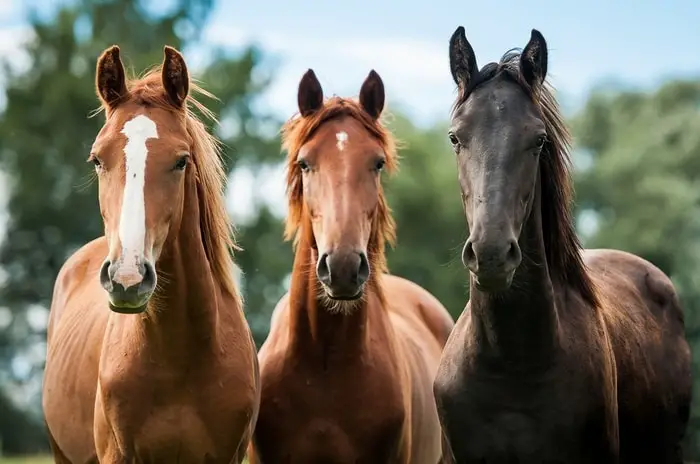
Checking Your Horse’s Temperature
How To Take the Temperature in Horse
- Grease the measuring end of the thermometer with some lubrication, such as petroleum jelly or saliva. For safety, have someone reassuring the horse and steading his head.
- A horse’s temperature is taken in the rectum.
- Stand to one side of the horse’s rear; run your hand over the quarters and then grasp the base of the tail firmly.
- Lift the tail and then insert the bulb end of the thermometer into the anus. Keep hold of the tail, so the horse does not clamp it down and hang on to the thermometer.
- Remain at the side of the horse to avoid being kicked. Leave the thermometer inserted for about a minute. Please make sure you tilt it against the wall of the rectum.
- Gently move the thermometer, wipe it clean with cotton wool or a tissue, and read it. Afterward, clean it with cold water and disinfect it.
- If the horse’s temperature is high or low, always check it 30 minutes later to confirm the reading.
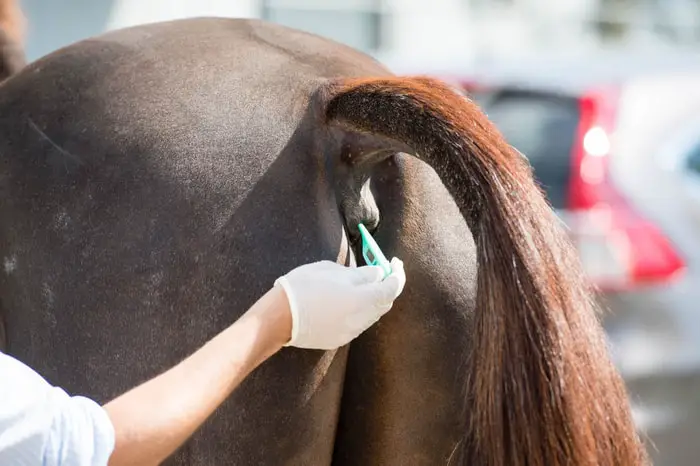
Indications of Temperature in Horse’s Health
1. Slightly Increased Temperature. Not usually severe and normal after exercise.
2. High Temperature overn102.5° F. Potentially serious, it suggests that the horse is ill, with a viral or bacterial infection, or is in pain.
3. Very Low Temperature. This suggests the horse is not well and maybe in a state of shock.
How To Use a Thermometer in Horse
Although a human thermometer will work, a special veterinary thermometer can be purchased. The ideal is easy to read digital thermometer. If you use a glass thermometer, make sure the mercury is shaken right down to its bulb end before you start, as it will not record a lower reading accurately if the mercury is at the top of its scale.
Some identification microchips will also tell the horse’s temperature when the particular reader device is used. Although the temperature is usually recorded in degree centigrade (˚C), some are more similar with Fahrenheit (˚F) values. While most thermometers show the temperature on both scales, some do not. For conversion, the following equations should be used:
˚C=(˚F-32)x5/9
˚F=(˚Cx9/5)+32
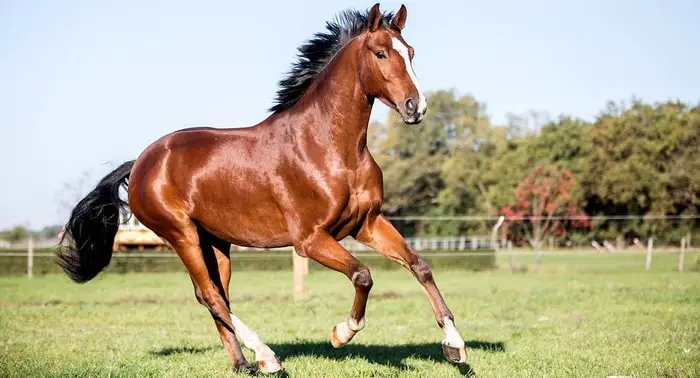
Horse Vital Signs: Checking the Pulse and Heart Rate
Being able to check your horse’s pulse and heart rate will help you monitor his well-being. The heart rate at rest will vary from one individual animal to another, depending on various factors, such as breed, age, gender, and degree of fitness. The horse’s heart is a large, efficient pump, so it only needs to pump relatively slowly- and in fact, it will occasionally miss a beat at rest, which is perfectly normal but problematic when you are trying to measure rate. Practice finding your horse’s pulse after working when it is more robust and therefore more obvious.
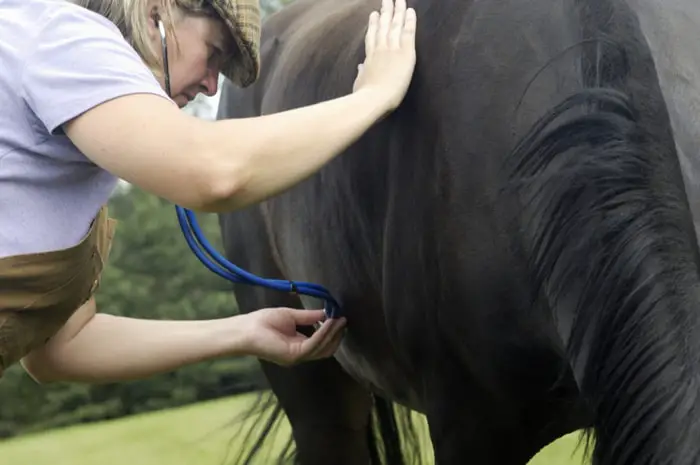
How To Feel the Heartbeat?
The heartbeat in the horse is most easily felt on the left side of the lower chest, where the perimeter would go just behind the elbow. The pulse is the actual pressure beat as the blood is rhythmically pumped through the arteries. The heart rate and pulse rate are usually the same.
How To Take the Horse’s Pulse Rate
The horse’s resting pulse is slow, so it can be challenging to detect.
- The best to feel it is where the facial artery passes under the jaw. Make sure the head is still, and the horse is not eating.
- Run your fingers along the lower body edge of the jaw; the pulsing artery will feel a tubular structure.
- If you lightly press this against the jaw with the flat of your first two or three fingers, you will feel the pulse.
- Count the number of heartbeats in 15 seconds and multiply by four to get the pulse rate per minute.
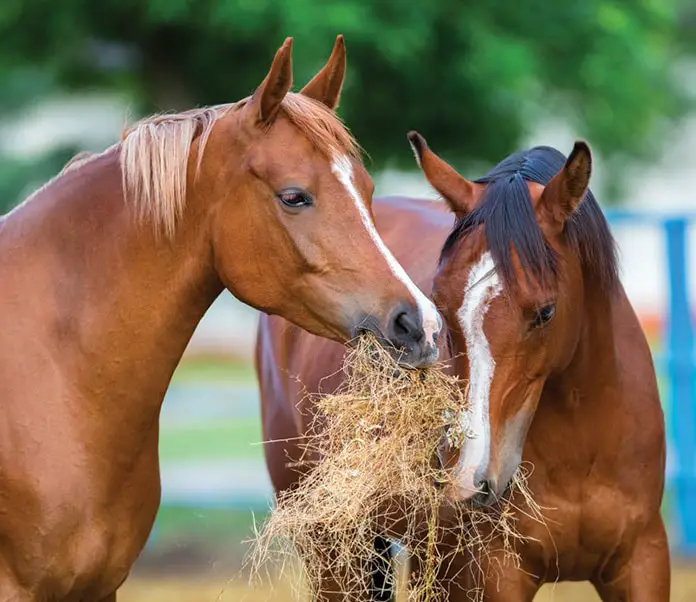
Horse Vital Signs: Other Pulse Points
Other good places that you can feel the pulse, particularly in the shy head horse, are:
- Inside the forelimb just below the elbow on the axillary artery.
- At the back of the fetlock where the digital artery runs down to the foot (this pulse will pond if a horse or pony has laminitis or pus in the foot because there will be blood rushing to the foot).
- The tail under the dock, a good place for feeling the coccygeal artery in a horse that does not kick.
Interpretation of Horse’s Pulse
1. Raised Pulse rate. First, consider the following reasons for an acute unexpectedly high rate:
- Anxiety is a common reason for a transient increase in pulse rate. a. If he is nervous or alarmed, for example, when a vet or other stranger approaches him, his pulse will shoot up. But when he calms down, his pulse will quickly return to normal too.
- Exercise: If a horse has just been worked, his pulse will be faster than average. The pulse rate depends on the amount of exercise given, the recovery period, and how to fit the horse.
- If your horse is injured while competing, do not be alarmed if the pulse is fast when first measured. Always allow time for a pulse to return to normal.
2. Persistently Raised Pulse Rate. If your horse consistently has a high-speed pulse- over 80 per minute- there is something serious going on. It would be good to look for other signs such as colic and immediately contact your vet. Reasons for persistently raised pulse include:
- Pain.
- Fever.
- Heat exhaustion.
- Shock.
- Heart Diseases.
3. Low Pulse Rate. A low pulse usually indicates a relaxed, fit, and hopefully healthy horse; however, it can be associated with severe conditions like shock, hypothermia, or even poisoning. If you have a low pulse and a healthy horse, do not worry; if the horse looks ill, you should first take his temperature. If the horse is shocked, he will have a weak pulse, and you must try to find out why. If there is no apparent reason to rectify- for instance, by warming him up with rugs- then talk to your vet.
Horse’s Vital Signs: Checking the Respiratory Rate
The respiratory rates are increasing with exercise, pain, and high temperatures, as well as respiratory diseases themselves. Any significant change should be taken seriously. A horse with several breathing problems will have only one heartbeat for three breaths or worse. When a horse has difficulty breathing, the whole flank will heave up and down with the extra respiratory effort; hence the name ‘heaves’ for severe stable cough and dust allergy.
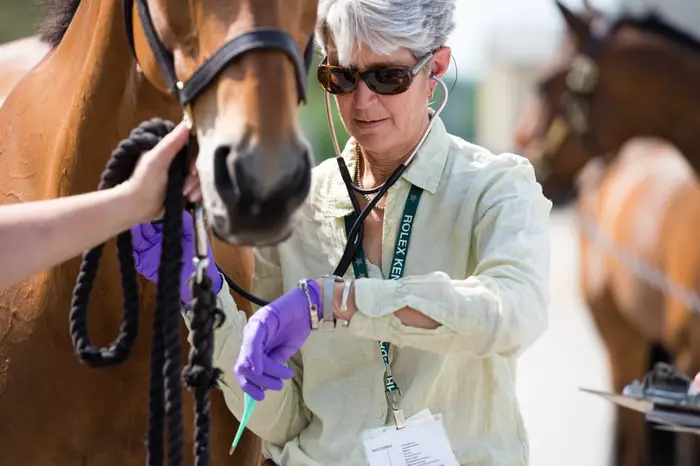
How To Measure the Respiratory Rate in Horse?
The best way to measure respiratory rate is to either hold a hand close to the horse’s nostrils to feel each breath or count the flank movements as the horse breathes in and out. On a cold day, you will be able to see each time he exhales. It is worth noting that a horse usually has around three heartbeats to see one breath, and this ratio stays about the same with exercise, although not with the disease.
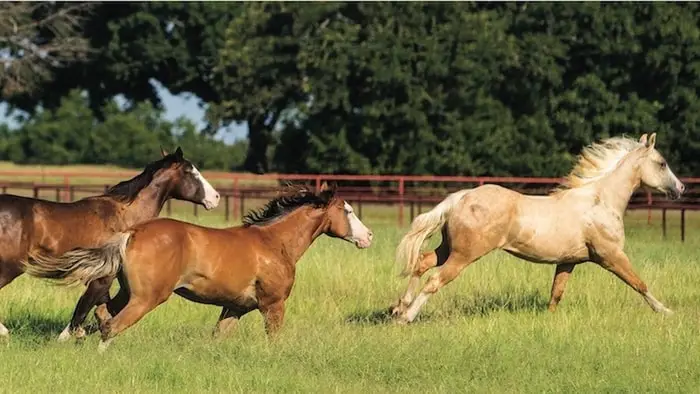
Horse’s Vital Signs: Other Important Signs
1. Appetite. You should know what an individual horse eats. Being off their food is a crucial clue that they are unwell for many. Some fit animals are fussy and will go off their feed for no reason, but most ponies and some horses are stomachs on legs, and if they stop eating, something significant must be wrong.
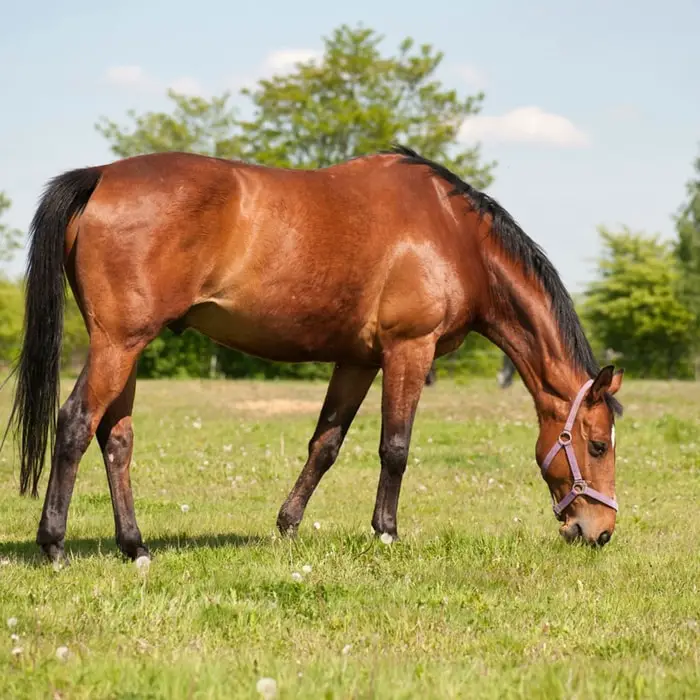
2. Thirst. Horses usually drink 20 to 45 liters of water a day, but these vary with the weather, their exercise levels, and the moisture in the rest of their diet.
3. Droppings. Loose dropping or diarrhea are causes of concern. Equally, you should be worried if a horse has passed fewer droppings than he usually does, as this may lead to constipation or colic.
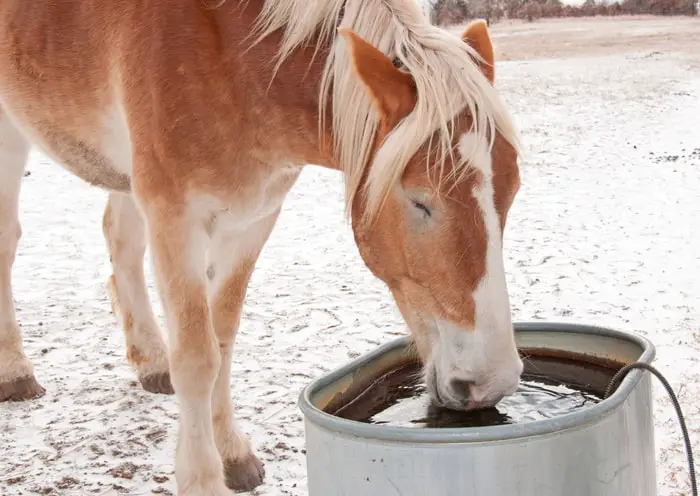
4. Urine. A horse’s urine can generally be very cloudy and range from pale yellow to brown. You should be concerned if it appears red or if the horse is repeatedly straining to pass urine.
5. Skin. The horse’s skin should be supple and a shine to the coat.
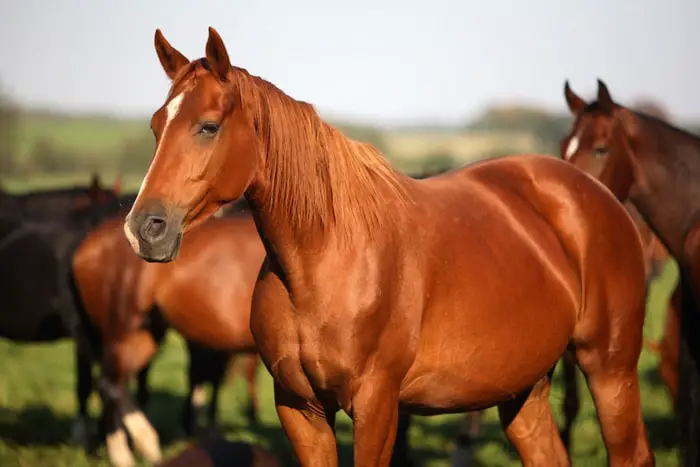
6. Mucous Membrane. The membranes around the eye and on the gums should be a healthy salmon-pink color (except for the occasional horse with pigmented gums). Check the circulation by measuring the capillary refill time (CRT); to do this, press a pink area of the gum, it will balance under pressure, then you will take the pressure away, it should return to its standard pink color within 3 seconds. A delay suggests a circulatory problem such as shock.
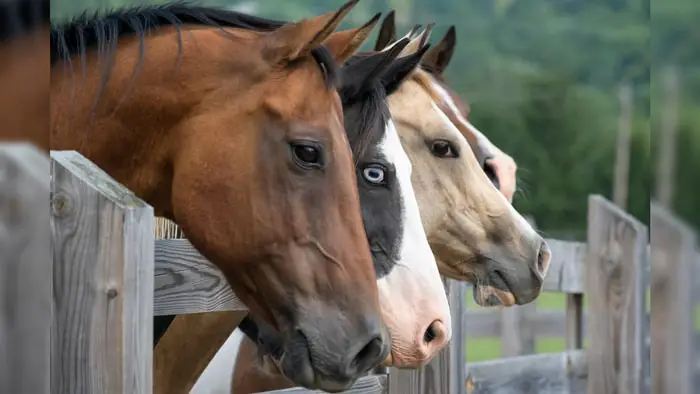
7. Sweating. It is not linked to exercise; it suggests that something is wrong. The horse may be in pain.
8. Mental State. A healthy horse should prick his ears and look inserted in his surroundings. If the horse is dull and unresponsive, something may be wrong.
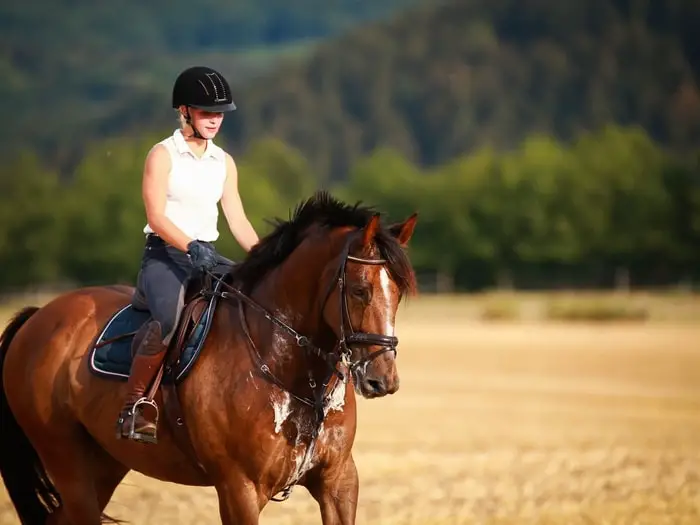
9. Lameness. Usually, lameness means that one or more legs are painful, although sometimes there will be a mechanical lameness, where some restriction prevents a limb from bending correctly. If a horse is very lame, he will not stand on the affected leg; subtle lameness is much harder to appreciate.
Concluding Remarks on Horse Vital Signs
A horse’s vital signs are most important to see the horse is healthy or not. The vital signs must be measured in every disease or deformity. During the regular health check-up, you must measure vital signs like temperature, heart rate, respiratory rate, and other associated signs. In my article, I have briefly discussed vital signs and their implications. This article will help you assess the horse’s health and mental conditions.